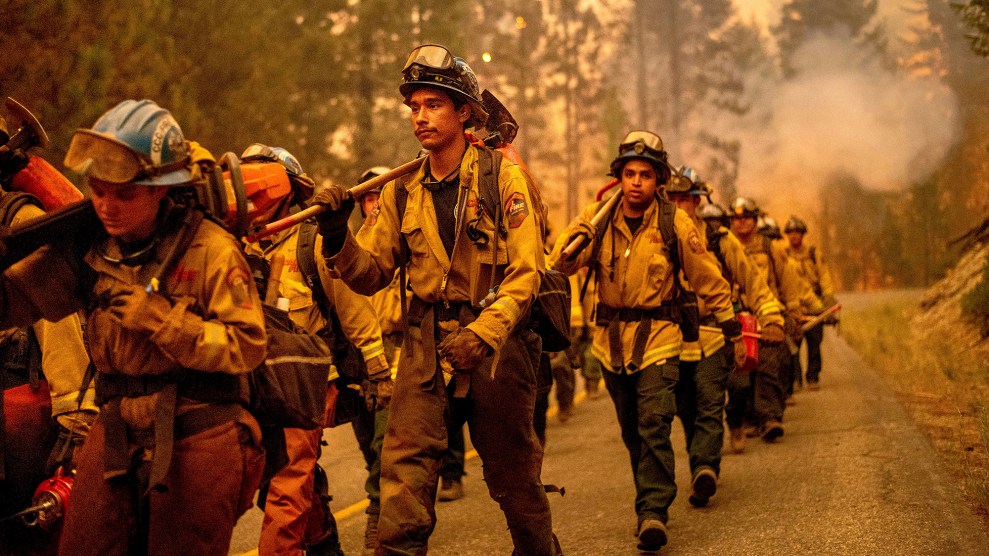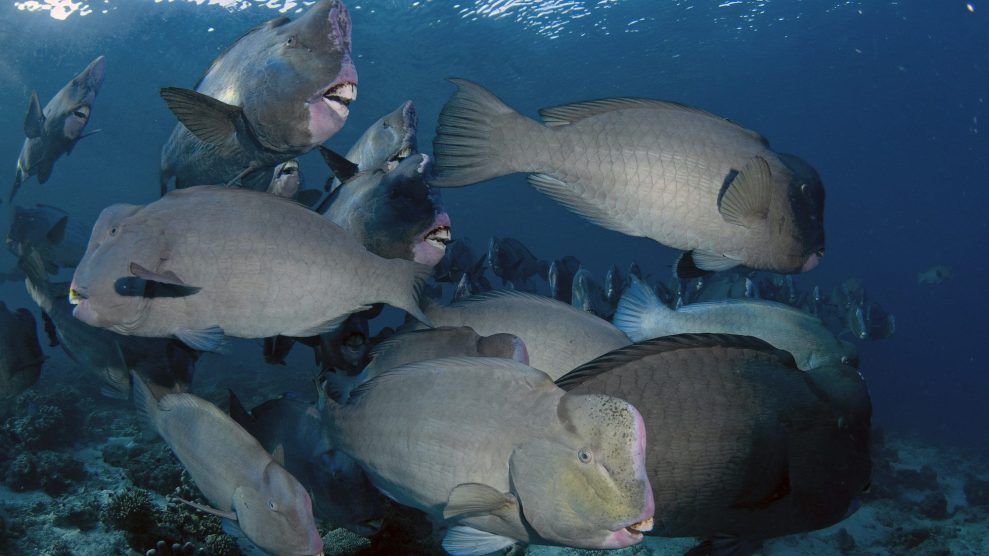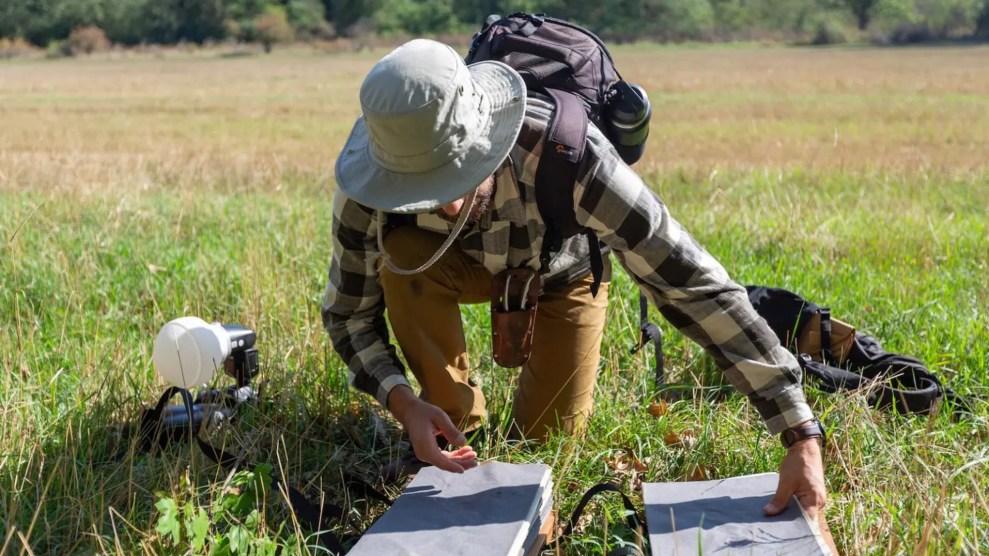
Damselfishes and Mediterranean bream fishes or Sarpa salpa, in the Roustaud reef near La Ciotat, southern France. August 18, 2019.Boris Horvat/AFP
This story was originally published by Wired and is reproduced here as part of the Climate Desk collaboration.
On November 19, 1969, the CSS Hudson slipped through the frigid waters of Halifax Harbour in Nova Scotia and out into the open ocean. The research vessel was embarking on what many of the marine scientists on board thought of as the last great, uncharted oceanic voyage: The first complete circumnavigation of the Americas. The ship was bound for Rio de Janeiro, where it would pick up more scientists before passing through Cape Horn—the southernmost point in the Americas—and then head north through the Pacific to traverse the ice-packed Northern Passage back to Halifax Harbour.
Along the way, the Hudson would make frequent stops so its scientists could collect samples and take measurements. One of those scientists, Ray Sheldon, had boarded the Hudson in Valparaíso, Chile. A marine ecologist at Canada’s Bedford Institute of Oceanography, Sheldon was fascinated by the microscopic plankton that seemed to be everywhere in the ocean: How far and wide did these tiny organisms spread? To find out, Sheldon and his colleagues hauled buckets of seawater up to the Hudson’s laboratory and used a plankton-counting machine to total up the size and number of creatures they found.
Life in the ocean, they discovered, followed a simple mathematical rule: The abundance of an organism is closely linked to its body size. To put it another way, the smaller the organism, the more of them you find in the ocean. Krill are a billion times smaller than tuna, for example, but they are also a billion times more abundant.
But now humans seem to have broken this fundamental law of the ocean. In a November paper for the journal Science Advances, Galbraith and his colleagues show that the Sheldon spectrum no longer holds true for larger marine creatures. Thanks to industrial fishing, the total ocean biomass of larger fish and marine mammals is much lower than it should be if the Sheldon spectrum was still in effect. “There was this pattern that all life seems to have been following for reasons that we don’t understand,” says Galbraith. “We have changed that over the last 100 years or even less.”
To work out if the Sheldon spectrum still held true, Galbraith and his colleagues brought together data on plankton from satellite images and ocean samples, scientific models that predict the abundance of fish, and marine mammal population estimates from the International Union for Conservation of Nature. In total, the group estimated the global abundance of 12 major groups of marine organisms, from bacteria to mammals. They then compared the state of today’s oceans with an estimate of what they might have been like before 1850, by taking into account the fish and mammals that industrialized fishing and whaling have plucked out of the water. To simplify things, the researchers assumed that the levels of bacteria, plankton, and smaller fish in 1850 were similar to today’s levels.
When Galbraith and his colleagues looked at this pre-1850 estimate they could immediately see that the Sheldon spectrum largely held true. The researchers found that in the pre-1850 scenario, biomass was remarkably consistent across size brackets. When they totaled up all the organisms that weighed between 1 and 10 grams, it came to 1 billion metric tons. The same was true for all the organisms weighing between 10 and 100 grams, and between 100 grams and 1 kilogram, and so on. Only at the very extreme ends of the spectrum—the smallest bacteria and the biggest whales—did the measurements start to vary.
Comparing these pre-1850 estimates to the modern-day models told a very different story. The models suggest that the biomass of fish larger than 10 grams and all marine mammals has shrunk by more than 2 billion metric tons since 1800. The very largest size classes appear to have experienced a reduction in biomass of nearly 90 percent since 1800. Many of the big fish and mammals that used to populate the ocean simply aren’t there anymore.















